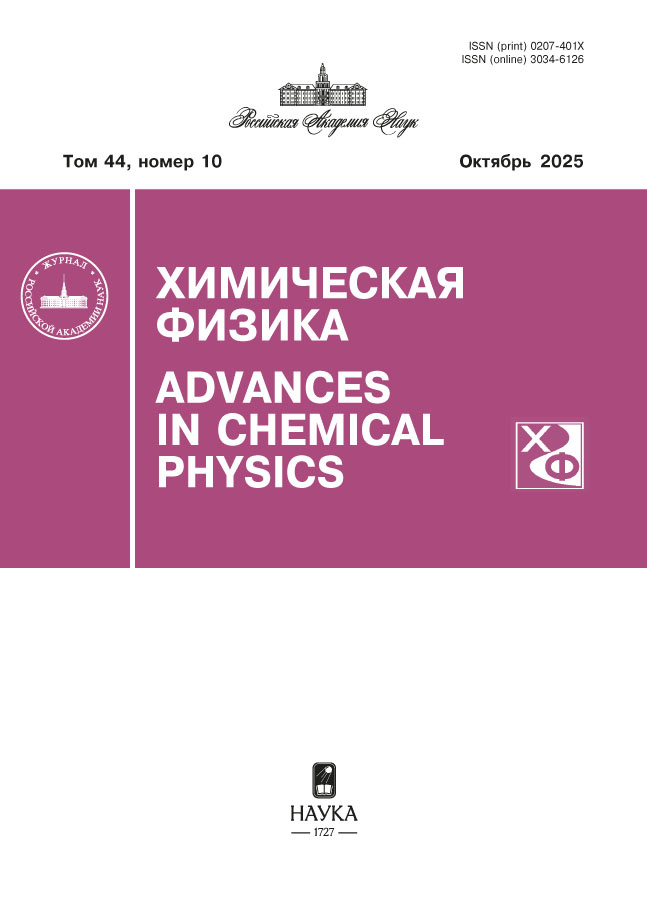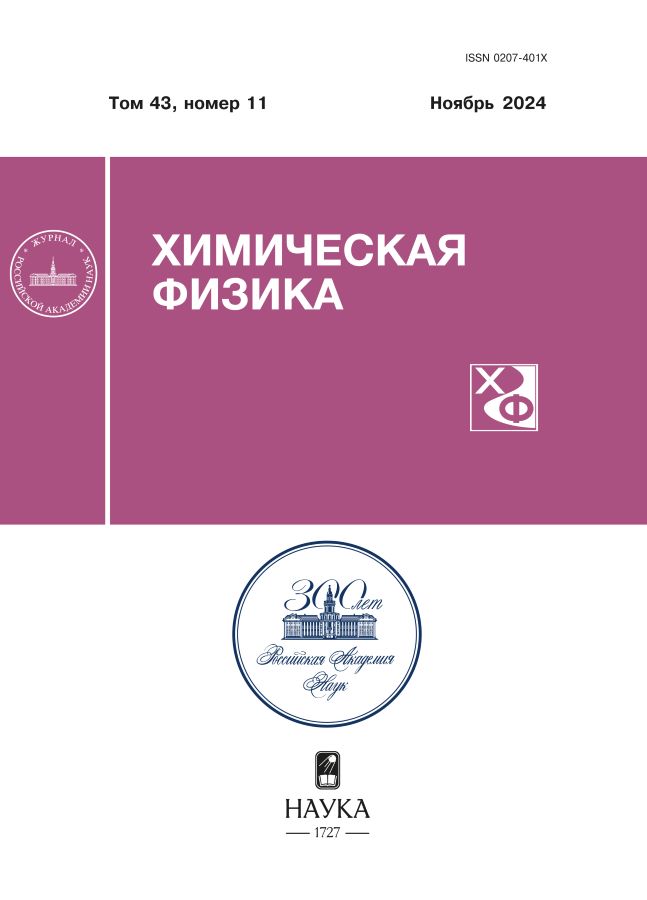Влияние региодефектов на поляризацию сегнетоэлектрических полимеров при низких температурах
- Авторы: Атражев В.В.1, Дмитриев Д.В.1, Кривнов В.Я.1, Султанов В.И.1
-
Учреждения:
- Институт биохимической физики им. Н.М. Эмануэля Российской академии наук
- Выпуск: Том 43, № 11 (2024)
- Страницы: 31-38
- Раздел: Электрические и магнитные свойства материалов
- URL: https://cardiosomatics.ru/0207-401X/article/view/680975
- DOI: https://doi.org/10.31857/S0207401X24110041
- ID: 680975
Цитировать
Полный текст
Аннотация
Предложена модель для исследования влияния региодефектов (противоположная ориентация соседних мономерных единиц вдоль цепи) на поведение сегнетоэлектрических полимеров в электрическом поле при низких температурах. В рамках модели показано, что вблизи региодефектов происходит плавная переориентация дипольных моментов мономеров, что согласуется с данными, полученными в молекулярно-динамических (МД) расчетах. Получено аналитическое выражение для зависимости средней поляризации цепи от температуры, электрического поля и концентрации региодефектов. Из сравнения с МД-расчетами проведены оценки жесткости связи соседних мономеров и наведенного электрического поля. Исследована квантовая версия предложенной модели. Показано, что основное состояние является синглетным, а возбуждения могут быть как бесщелевыми, так и со щелью, в зависимости от четности количества мономеров между дефектами. На нуль-температурной кривой намагниченности имеется плато.
Ключевые слова
Полный текст
Об авторах
В. В. Атражев
Институт биохимической физики им. Н.М. Эмануэля Российской академии наук
Email: krivnov@deom.chph.ras.ru
Россия, Москва
Д. В. Дмитриев
Институт биохимической физики им. Н.М. Эмануэля Российской академии наук
Email: krivnov@deom.chph.ras.ru
Россия, Москва
В. Я. Кривнов
Институт биохимической физики им. Н.М. Эмануэля Российской академии наук
Автор, ответственный за переписку.
Email: krivnov@deom.chph.ras.ru
Россия, Москва
В. И. Султанов
Институт биохимической физики им. Н.М. Эмануэля Российской академии наук
Email: krivnov@deom.chph.ras.ru
Россия, Москва
Список литературы
- Tasaka S., Miyasato K., Yoshikawa M. et al. // Ferroelectrics. 1984. V. 57. № 1. P. 267.
- Tasaka S., Ohishi K., Inagaki N. // Ibid. 1995. V. 171. № 1. P. 203.
- Wedel A., von Berlepsch H., Danz R. // Ibid. 1991. V. 120. № 1. P. 253.
- Bae J.-H., Chang S.-H. // Funct. Compos. Struct. 2019. V. 1. № 1. P. 012003.
- Воробьев А.О., Кульбакин Д.Е., Чистяков С.Г. и др. // Хим. физика. 2023. Т. 42. № 11. С. 9.
- Игнатьева Л.Н., Мащенко В.А., Горбенко О.М. и др. // Хим. физика. 2023. Т. 42. № 11. С. 23.
- Кочервинский В.В., Градов О.В., Градова М.А. // Успехи химии. 2022. Т. 91. № 11. С. RCR5037.
- Lu S. G., Rozic B., Kutnjiak Z., et al. // Integr. Ferroelectr. 2011. V. 125. № 1. P. 176.
- Neese B., Chu B., Lu S-G. et al. // Science. 2008. V. 321. № 5890. P. 821.
- Basso V., Russo F., Gerard J.-F. et al. // Appl. Phys. Lett. 2013. V. 103. № 20. P. 202904.
- Sultanov V.I., Atrazhev V.V., Dmitriev D.V. et al. // Macromolecules. 2021. V. 54. № 8. P. 3744.
- Sultanov V.I., Atrazhev V.V., Dmitriev D.V. // J. Polym. Sci. 2023. V. 61. № 18. P. 2091.
- Anousheh N., Godey F., Soldera A. // J. Polym. Sci., Part A: Polym. Chem. 2017. V. 55. № 3. P. 419.
- Sultanov V. I., Atrazhev V. V., Dmitriev D. V. // J. Phys. Chem. B. 2024. V. 128. № 26. P. 6376.
- Лихачев В.Н., Виноградов Г.А., Эрихман Н.С. //Хим. физика. 2020. Т. 39. № 6. С. 3.
- Takahashi M., Nakamura H., Sachdev S. // Phys. Rev. B. 1996. V. 54. № 2. P. R744.
- Marko J.F., Siggia E.D. // Macromolecules. 1995. V. 28. № 26. P. 8759.
- Кривнов В.Я., Дмитриев Д.В. // Хим. физика. 2021. Т. 40. № 2. С. 29.
- Haldane F.D.M. // Phys. Rev. Lett 1983. V. 50. № 15. P. 1153.
- Chen W., Hida K., Sanctuary B.C. // J. Phys. Jpn. 2000. V. 69. № 10. P. 3414.
- Ливанова Н.В., Правада Е.С., Ковалева Л.А., Попов А.А. // Хим. физика. 2023. Т. 42. № 5. С. 43.
Дополнительные файлы















